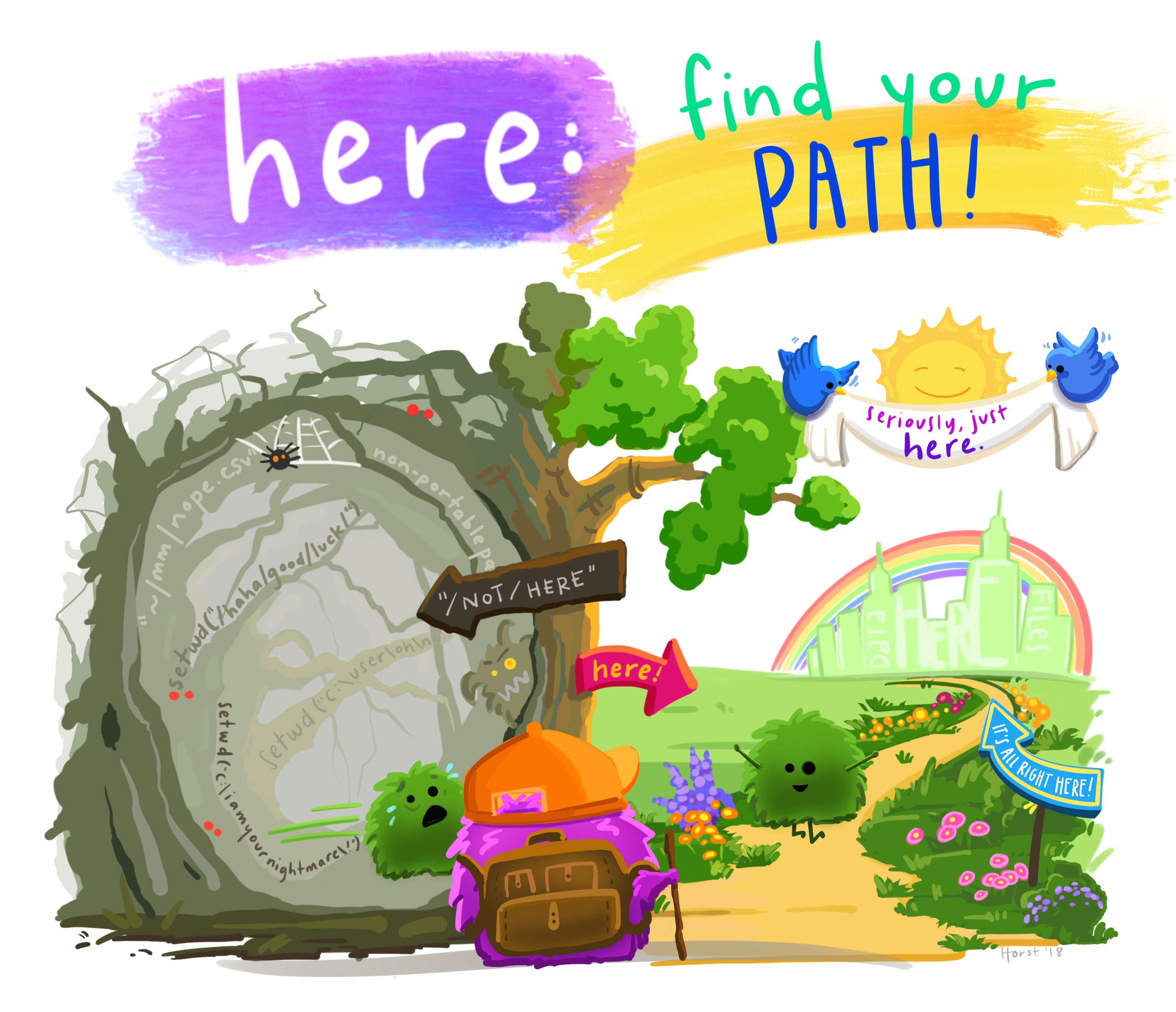1 - Introduction
Welcome to Class: ESS 330
2025-02-09
Welcome!
What This Class Is About:
- Learning essential quantitative skills for ecosystem science
- Emphasizing real-world applications
- Developing proficiency in data science tools and methods
- Understanding and applying open science principles
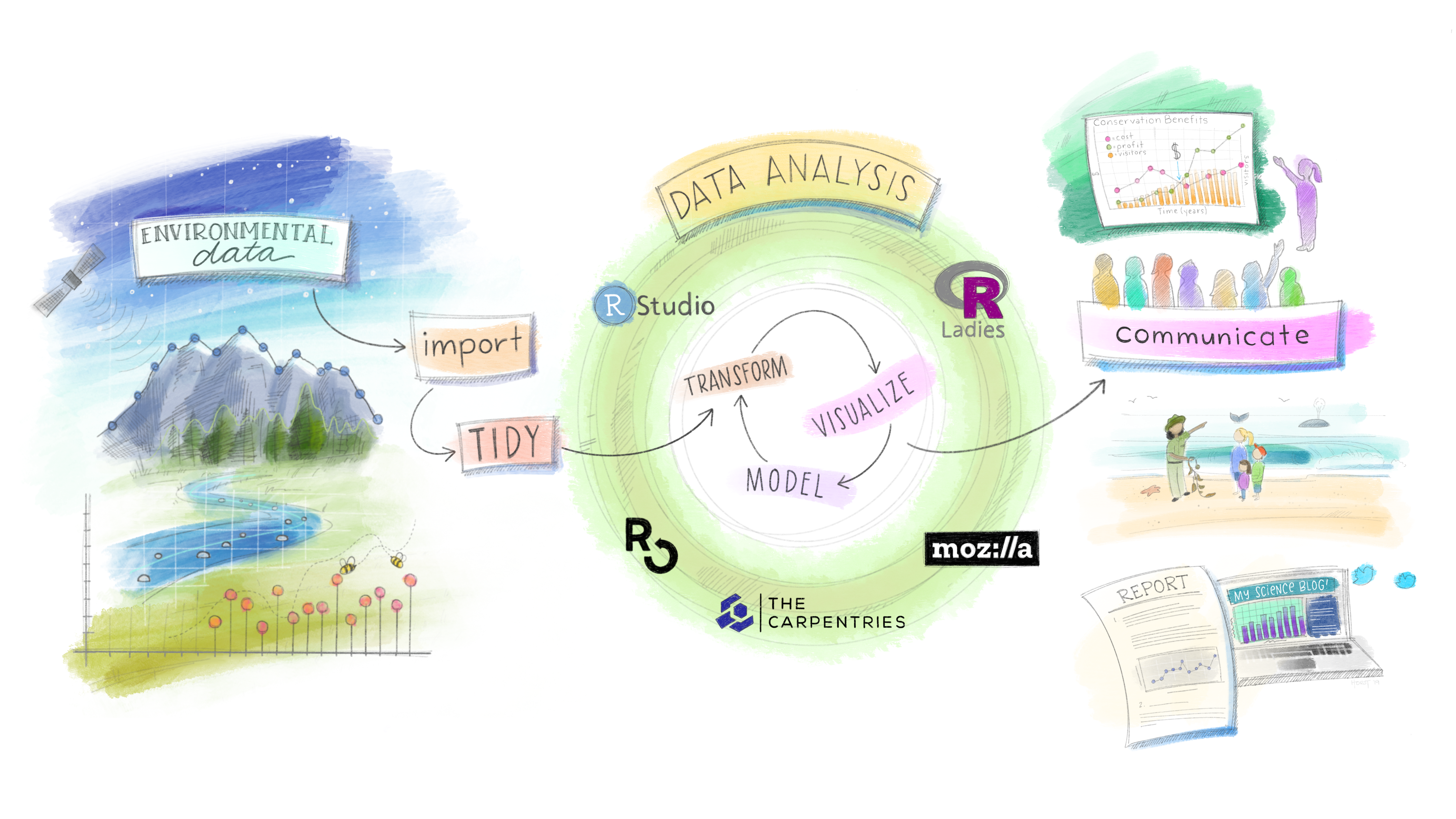
Why This Class Matters:
- Complex, messy data sets
- Diverse, rapidly changing tools and workflows
- Need for reproducibility and transparency
- Increasing societal role in that face of new world
Goals for You:
Build confidence in tackling data-intensive problems: if not you then who?
Gain practical, hands-on experience: All (almost) environmental issues now require data
- Policy & Management
- Modeling
- Stake holder engagement
Develop a critical mindset for evaluating models and results
- Merging technical skill, communication skills, and passion are critical to success
Learn to merge data, and writing to communicate complex issues
Prepare for careers or advanced studies in environmental science and sustainability

Building a “ESS Trifecta”:
Combining strong writing skills, advanced data analysis capabilities, and deep domain expertise (in areas such as water, carbon, or ecosystem management systems) paves the way for a flexible, impactful, and interdisciplinary career. Whether your goal is to excel as a scientist, policymaker, or NGO leader, these skills will empower you to make meaningful contributions across diverse fields.
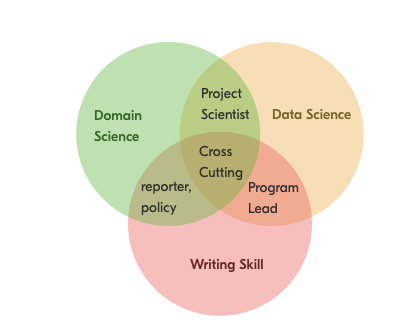
Instructor: Mike Johnson
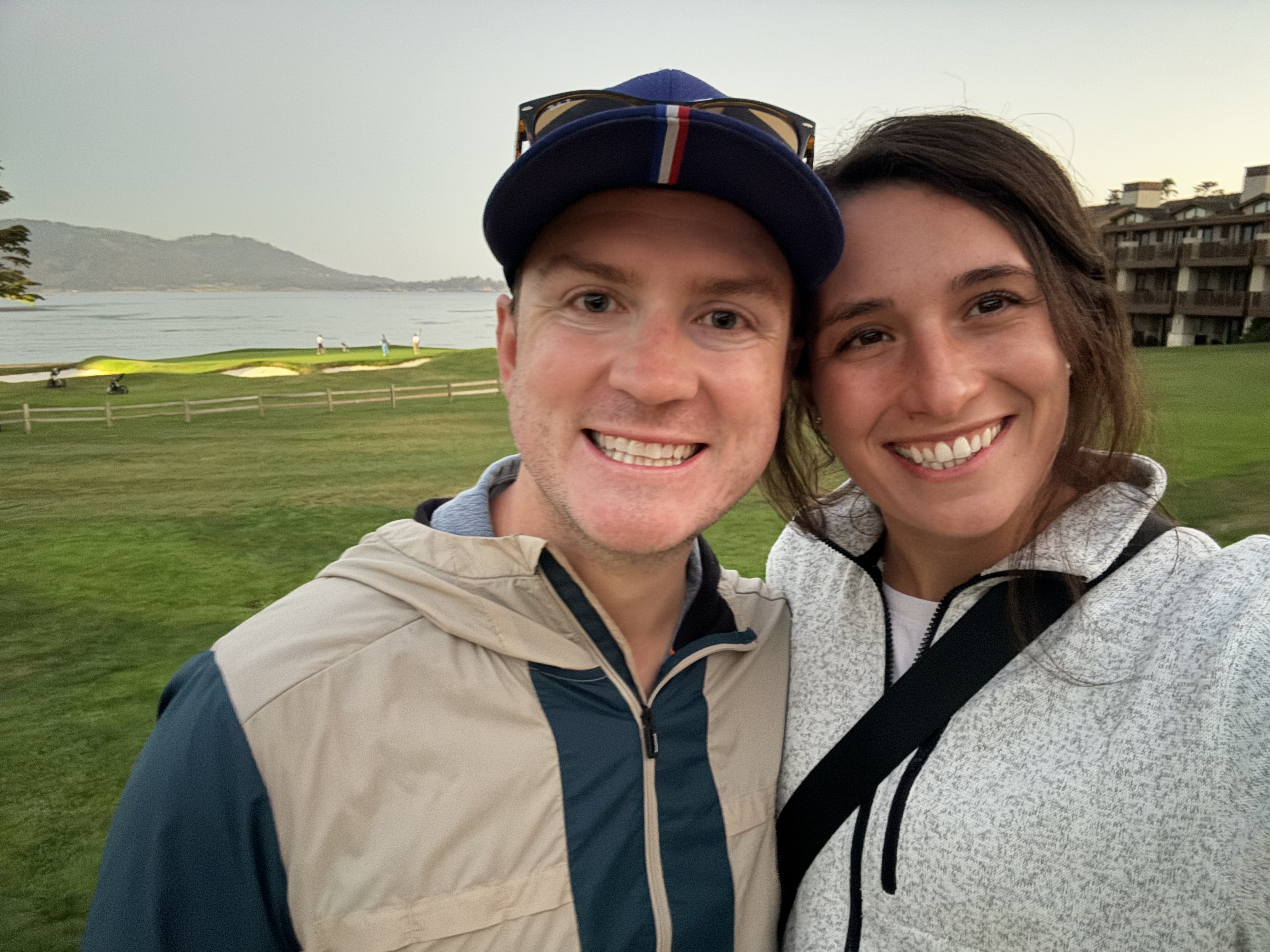
Geospatial Science & Technology Lead @ NOAA Office of Water Prediction
Previously, Chief Data Scientist for local consulting group
- Grew our division form 3 to 15 before transitioning
PhD from UCSB in Geography
Over 10 years of experience working in hydrology and ecosystem science
Passionate about applying data science to solve environmental challenges
Excited to share practical tools and insights to prepare you for real-world problem
Teaching Assistant: Alan Cai

Teaching Assistant: Jaque McVey
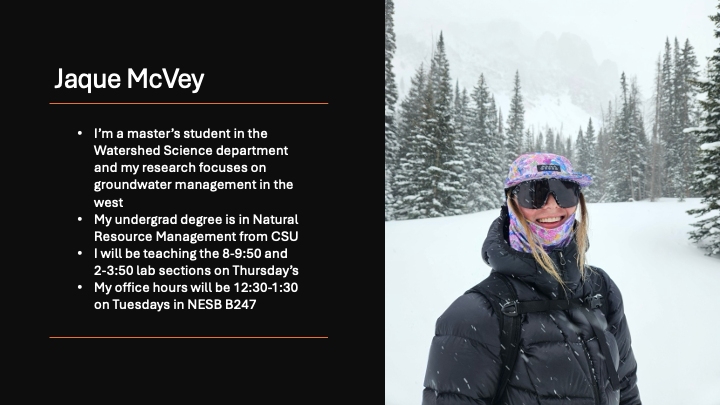
Course Website:

Course Structure: 4 Units
- Open Science and Tools (Weeks 1-3)
- Introduction to reproducible workflows and software (R, Rmd, Git)
- How do you interact with you computer whether you love it or hate it
- Working with Data (Weeks 4-7)
- All data is messy!
- How do you refine data to answer questions you have in ways others will care about and understand
- Modeling (Weeks 8-12)
- Statistical and simulation models to solve ecosystem-related problems
- Pull the current back on “Machine Learning”
- Understand that “all” problems are either prediction or classification
- Geospatial Data (Weeks 13-16)
- All problems are spatial, how can we add location information to our growing skill set?
Course Components:
Activites:
- Daily Exercises (20%)
- To be completed between the end of a class and the beginning of the next
- Pass/Fail based on effort
- Meant to be low stakes opportunity to experiments
- One “opps pass” is given per unit
- Lab Activities (10%)
- Work with TAs is lab sections to practice skills learned in class on real world problems
- Pass/Fail based on effort
- Meant to be low stakes opportunity to experiments
- One “opps pass” is given
Assignments:
- Labs (50%)
- Work with TAs is lab sections to practice skills learned in class on real world problems
- 9 in total, some due weekly, others spread over a few
- Final project (20%)
- Choose a final project to demonstrate your quantitative reasoning skills, mixing ideas from lectures and labs throughout the semester
- Present in lightning talk format within lab section
Extra Credit:
- Extra Credit (up to 10%)
- 4% are available for completing all Daily Assignments
- 6% are available in extra aspects of the bigger labs
- 1% are available for extra lab activity
Grading:
Components
| Component | Points | Percentage |
|---|---|---|
| Daily Exercises | 250 | 20% |
| Lab Activities | 120 | 10% |
| Labs | 620 | 50% |
| Final Project | 250 | 20% |
| Extra Credit Opportunities | 130 | 10% |
| Total Assigned Points | 1,240 | |
| Total Possible Points | 1,370 |
Scale:
A+: 100 % to 96.67%
A : < 96.67 % to 93.33%
A-: < 93.33 % to 90.0%
B+: < 90.0 % to 86.67%
B : < 86.67 % to 83.33%
B-: < 83.33 % to 80.0%
C+: < 80.0 % to 76.67%
C : < 76.67 % to 70.0%
D : < 70.0 % to 60.0%
F : < 60.0 % to 0.0%
Our promise:
This class will have a steep learning curve.
Jaque, Alan and I will do everything we can to help you along. If you stick with the course and do the work (particularly the daily assignments!), you will get a good grade, learn a lot, and be prepared to serve as a environmental data scientist in a quantitative capacity - OR - better communicate with those who are serving in that role
This style has worked for past students and while I have had students drop, I have never had anyone who tried get lower then a B+.
So, please don’t let “getting a bad grade” be a reason to not see this class through!
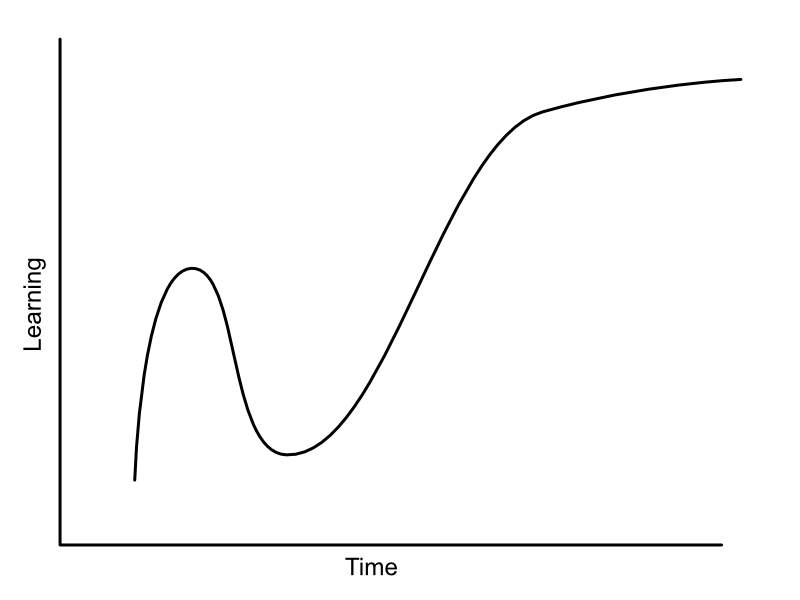
Working Together:
For exercises, labs and assignments, you are welcome to work together but you are expected to write up your own assignment, and hand in your own individually conducted work, including results (models, graphics, tables, etc.) and writing.
The project will be done in teams determined in lab

Compute Needs:
For this class, we will be installing software and learning about how to organize and interact with our computers
To do this effectively you’ll need your own computer running a full OS (not Chromebook)
If this is not possible, please reach out to me or your TA and we can find a solution

Attendance:
Each lecture will introduce new topics or expand on existing content. Therefore if you miss a section or lab, you will miss material. It is highly encouraged that you attend all lectures and the lab sections.
We have built this into the grading scheme and believe it facilitates the push to “put in the time”
That said, things happen. If you communicate with your TA’s or me we will help you find a solution

Next Time:
Daily Assignment: Install R and RStudio
Next Topic: Your Digital Environment
